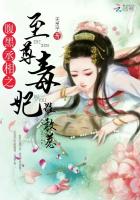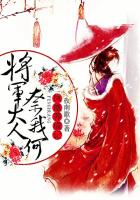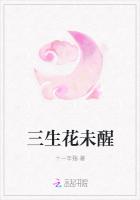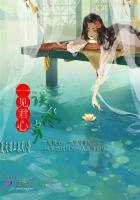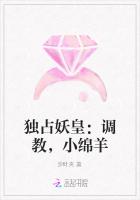Doubtless the royal flower was the white iris, and as li is the Celtic for white, there is room for another theory as to the origin of the name.It is our far more regal looking, but truly democratic blossom, jostling its fellows in the marshes, that is indeed "born in the purple."When Napoleon wished to pose as the true successor of those ancient French kings whose territory included the half of Europe - ignoring every Louis who ever sat on the throne, for their very name and emblem had become odious to the people - he discarded the fleur-de-lis, to replace it with golden bees, the symbol in armory for industry and perseverance.It is said some relics of gold and fine stones, somewhat resembling an insect in shape, had been found in the tomb of Clovis's father, and on the supposition that these had been bees, Napoleon appropriated them for the imperial badge.Henceforth "Napoleonic bees" appeared on his coronation robe and wherever a heraldic emblem could be employed.
But even in the meadows of France Napoleon need not have looked far from the fleurs-de-lis growing there to find bees.Indeed, this gorgeous flower is thought by scientists to be all that it is for the bees' benefit, which, of course, is its own also.
Abundant moisture, from which to manufacture nectar - a prime necessity with most irises - certainly is for our blue flag.The large showy blossom cannot but attract the passing bee, whose favorite color (according to Sir John Lubbock) it waves.The bee alights on the convenient, spreading platform, and, guided by the dark veining and golden lines leading to the nectar, sips the delectable fluid shortly to be changed to honey.Now, as he raises his head and withdraws it from the nectary, he must rub it against the pollen-laden anther above, and some of the pollen necessarily falls on the visitor.As the sticky side of the plate (stigma), just under the petal-like division of the style, faces away from the anther, which is below it in any case, the flower is marvelously guarded against fertilization from its own pollen.
The bee, flying off to another iris, must first brush past the projecting lip of the over-arching style, and leave on the stigmatic outer surface of the plate some of the pollen brought from the first flower, before reaching the nectary.Thus cross-fertilization is effected; and Darwin has shown how necessary this is to insure the most vigorous and beautiful offspring.Without this wonderful adaptation of the flower to the requirements of its insect friends, and of the insect to the needs of the flower, both must perish; the former from hunger, the latter because unable to perpetuate its race.And yet man has greedily appropriated all the beauties of the floral kingdom as designed for his sole delight The name iris, meaning a deified rainbow, which was given this group of plants by the ancients, shows a fine appreciation of their superb coloring, their ethereal texture, and the evanescent beauty of the blossom.
In spite of the name given to another species, the SOUTHERN BLUEFLAG (I.hexagona) is really the larger one; its leaves, which are bright green, and never hoary, often equaling the stem in its height of from two to three feet.The handsome solitary flower, similar to that of the larger blue flag, nevertheless has its broad outer divisions fully an inch larger, and is seated in the axils at the top of the circular stem.The oblong, cylindric, six-angled capsule also contains two rows of seeds in each cavity.From South Carolina and Florida to Kentucky, Missouri, and Texas one finds this iris blooming in the swamps during April and May.
The SLENDER BLUE FLAG (I.prismatica; I.Virginica of Gray), found growing from New Brunswick to North Carolina, but mainly near the coast, and often in the same oozy ground with the larger blue flag, may be known by its grass-like leaves, two or three of which usually branch out from the slender flexuous stem; by its solitary or two blue flowers, variegated with white and veined with yellow, that rear themselves on slender foot-stems; and by the sharply three-angled, narrow, oblong capsule, in which but one row of seeds is borne in each cavity.This is the most graceful member of a rather stiffly stately family.
POINTED BLUE-EYED GRASS; EYE-BRIGHT; BLUE STAR(Sisyrinchium angustifolium) Iris family Flowers - From blue to purple, with a yellow center; a Western variety, white; usually several buds at the end of stem, between 2 erect unequal bracts; about 1/2 in.across; perianth of 6spreading divisions, each pointed with a bristle from a notch;stamens 3, the filaments united to above the middle; pistil 1, its tip 3-cleft.Stem: 3 to 14 in.tall, pale hoary green, flat, rigid, 2-edged.Leaves: Grass-like, pale, rigid, mostly from base.Fruit: 3-celled capsule, nearly globose.
Preferred Habitat - Moist fields and meadows.
Flowering Season - May-August.
Distribution - Newfoundland to British Columbia, from eastern slope of Rocky Mountains to Atlantic, south to Virginia and Kansas.
Only for a day, and that must be a bright one, will this "little sister of the stately blue flag" open its eyes, to close them in indignation on being picked; nor will any coaxing but the sunshine's induce it to open them again in water, immediately after.The dainty flower, growing in dense tufts, makes up in numbers what it lacks in size and lasting power, flecking our meadows with purplish ultramarine blue in a sunny June morning.
Later in the day, apparently there are no blossoms there, for all are tightly closed, never to bloom again.New buds will unfold to tinge the field on the morrow.
Usually three buds nod from between a pair of bracts, the lower one of which may be twice the length of the upper one but only one flower opens at a time.Slight variations in this plant have been considered sufficient to differentiate several species formerly included by Gray and other American botanists under the name of S.Bermudiana.
LARGE or EARLY, PURPLE-FRINGED ORCHIS







